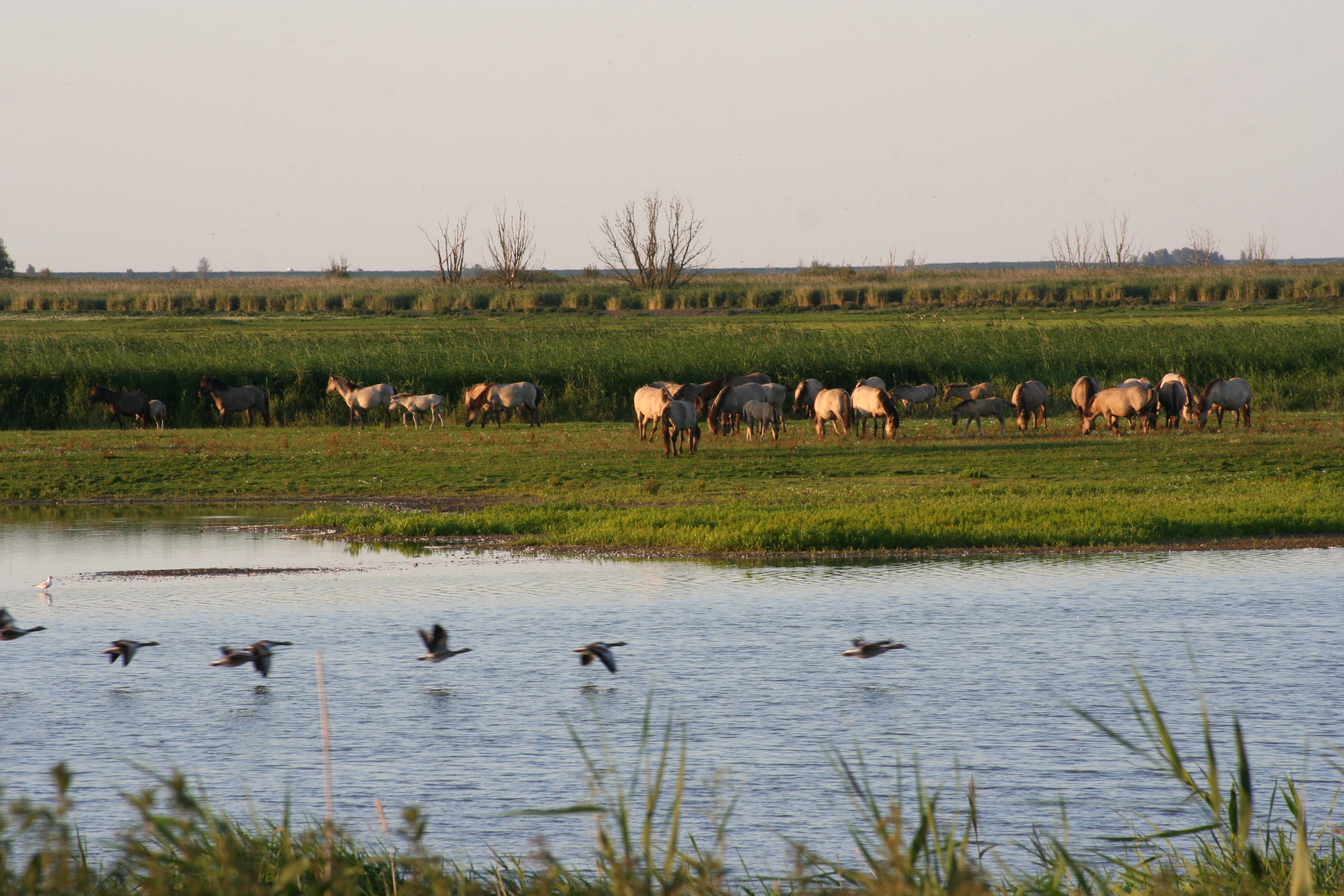First off, here is a link about the well known Dutch project at Oostvardersplassen. A 5000 ha area - not dissimilar in area to that which we might have aspirations for within our own project eventually. It is the sort of size of wetland restoration which would have real significance as a resource for wildlife and people.
At "OVP" the focus is on "rewilding", restoring a whole ecology and creating natural networks, some of which may form a strong part of our own thinking. With these come management challenges and OVP has encountered many challenges over the years.
In the image below Konic ponies graze the marshes of Oostvardersplassen. These are key grazers of the site alongside deer and native cattle.
Herbivores, whether commercial or semi-natural can play an important role in restoring and managing wetlands. The challenges are often about getting grazing levels right and sometimes in maintaining or managing the health or welfare of large herbivores in a wild system. If done well wetlands and grazing animals thrive. If incorporated into part of a farm operation or agricultural system they can have significant economic output too.
By EM Kintzel, I Van Stokkum (user's own files) [GFDL (http://www.gnu.org/copyleft/fdl.html) or CC BY 3.0 (http://creativecommons.org/licenses/by/3.0)], via Wikimedia Commons
This short trailer for a film about the site gives a strong flavour of the character of the site.
Of course there are benefits for people, not least of which is tourism with the site attracting many visitors to learn about and enjoy the wildlife, perhaps taken in while walking or cycling on part of the extensive network of linking routes. Bringing receration opportunities around such a wildlife site for local people and visitors alike is part of the key thinking within our own project.
While our own project concept focuses around different habitats with a different end suite of wildlife and many different challenges, perhaps there are lessons, both to follow and to avoid, to be learned from this example.
We will certainly be considering the best practice examples around in our thinking towards the concept and plans for a restored wetland site.
More on wetland restoration will follow in the next blog post...

No comments:
Post a Comment